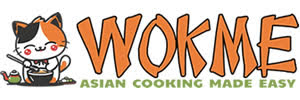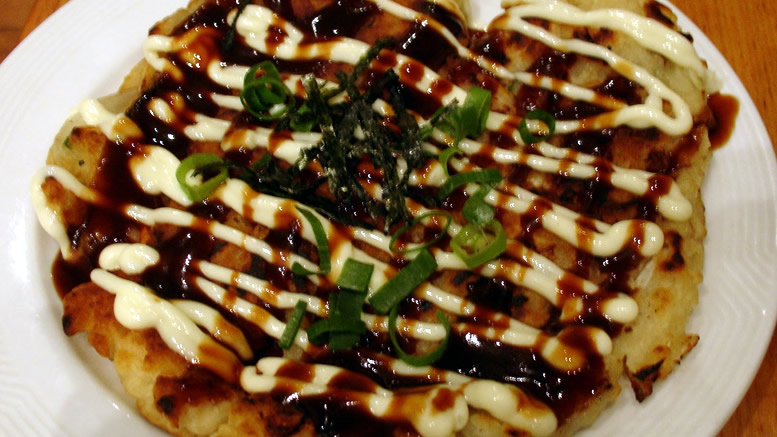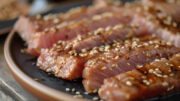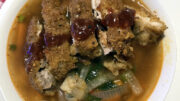Okonomiyaki, often referred to as a Japanese savoury pancake, has deep roots in Japanese cuisine. While its origins can be traced back to Edo-period Japan, its modern form developed after World War II, when wheat flour became more widely available. The name “okonomiyaki” roughly translates to “grilled as you like it,” highlighting its customisable nature.
Today, it is a beloved street food and restaurant dish across Japan, particularly in Hiroshima and Osaka, where regional variations have become iconic.
Osaka vs. Hiroshima: Two Styles of Okonomiyaki
Two of the most famous styles of okonomiyaki hail from Osaka and Hiroshima, each with its own distinct preparation method:
Osaka-Style Okonomiyaki: The batter (made of flour, eggs, shredded cabbage, and dashi) is mixed with various ingredients like seafood, pork, or cheese before being grilled on a hotplate. Toppings include okonomiyaki sauce, Japanese mayo, bonito flakes, and aonori (seaweed flakes).
Hiroshima-Style Okonomiyaki: Instead of mixing everything together, this version layers the ingredients, often including yakisoba noodles and a fried egg. The result is a more structured and complex dish.
The Signature Flavours of Okonomiyaki
What makes okonomiyaki stand out is its unique combination of textures and umami-rich flavours. Some of its signature ingredients include:
Okonomiyaki Sauce: A thick, tangy-sweet sauce similar to Worcestershire sauce but richer.
Japanese Mayonnaise: Creamy, slightly sweet, and often drizzled in a zig-zag pattern.
Bonito Flakes (Katsuobushi): These dried fish flakes “dance” when placed on the hot pancake.
Aonori: Dried seaweed flakes add a slightly briny taste.
Okonomiyaki Goes Global
While okonomiyaki is deeply rooted in Japanese culture, it has gained international recognition, with okonomiyaki specialty restaurants popping up worldwide. Chefs outside Japan have embraced its versatility, leading to fusion variations such as:
Korean-Inspired Okonomiyaki: Topped with kimchi and gochujang for extra spice.
Western-Style Okonomiyaki: Some versions incorporate bacon, cheese, or even avocado.
Vegan Okonomiyaki: Uses plant-based ingredients like chickpea flour and mushrooms instead of eggs and meat.
What to Serve with Okonomiyaki
Okonomiyaki is a satisfying meal on its own, but it pairs well with:
Miso Soup: A warm, umami-rich side dish.
Japanese Pickles (Tsukemono): Helps balance the richness of the pancake.
A Cold Beer or Ramune Soda: Complements the savoury-sweet flavours of okonomiyaki.
Final Thoughts
Okonomiyaki is more than just a pancake—it’s a reflection of Japan’s culinary creativity and adaptability. Whether you prefer the Osaka or Hiroshima style (or even a fusion twist), this dish offers something for everyone.
Have you tried making okonomiyaki at home? If not, have a go at our simple and tasty recipe here.





